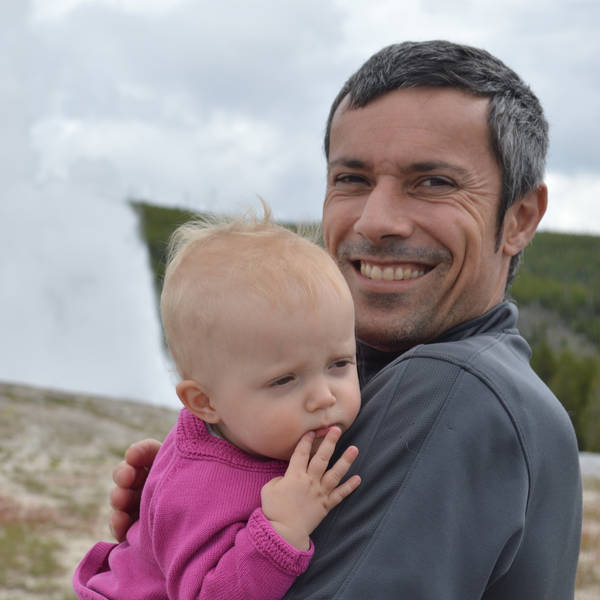In 1917, the United States entered World War I. It was also a century ago that the U.S. military created its first camouflage unit, and many of the pioneer "camoufleurs" either resided in or visited regularly what is now a national park site. Can you name this park?
One of America’s most famous sculptors, Augustus Saint-Gaudens is perhaps best known for his monuments celebrating Civil War heroes. He also contributed — albeit indirectly — to the United States’ first foray into camouflage.
Saint-Gaudens came to Cornish, New Hampshire, for the first time in 1885. The property, which the National Park Service now manages as the Saint-Gaudens National Historic Site, became his family’s summer house in 1900, when he settled there permanently. As his fame increased and orders piled up, Saint-Gaudens built a large studio for his assistants. Many other artists visited Saint-Gaudens or even lived on-site, and his compound became known as the “Cornish Colony.”
Saint-Gaudens himself never dabbled much in camouflage designs, said Roy Behrens, a professor of art at the University of Northern Iowa and the author of several books on art and camouflage — but several of the artists associated with the colony did.
Saint-Gaudens’ close friend Abbott Handerson Thayer, who lived in nearby Dublin, New Hampshire, is commonly known as the “father of camouflage,” in large part because of his theories on disruptive patterns and “countershading.” Thayer noted that many animals had a light underside with darker coloring on top (the opposite of the technique painters used to make an object appear three-dimensional) and that this inverted coloration, when combined with the sunlight from above, gave the animals the appearance of having less substance and made them more difficult to see.
Former President Theodore Roosevelt took issue with Thayer’s ideas (“There remain very large numbers of cases where his theory is certainly without even the smallest foundation of fact,” he wrote), but they ended up influencing several artists at the Cornish Colony and shaping many of the camouflage designs to come.
After their time at the Cornish Colony, two of Saint-Gaudens’ students, muralist Barry Faulkner and sculptor Sherry Edmundson Fry went on to form their own civilian camouflage unit and offered their services to the U.S. military. Their calls went unheeded at first, but in 1917, after the United States had joined the conflict, Gen. John Joseph Pershing finally asked artists to volunteer for camouflage duty.
“Not everyone thought it was a good idea,” Behrens said. “There’s a famous quote from an American officer in WWI, in which he remarks: ‘Oh, my god. As if we didn’t have enough trouble, they send us artists!’”
The head of the camoufleurs unit turned out to be Saint-Gaudens’ own son. Homer Saint-Gaudens wasn’t much of an artist himself, but he had been exposed to the ideas of the Cornish Colony artists, was the college roommate of Faulkner at Harvard and had trained as an officer at Plattsburgh, New York.
The unit trained at a camp at American University in Washington, D.C., and on one occasion, an officer, who might have been Homer Saint-Gaudens, demonstrated the efficacy of camouflage to President Woodrow Wilson. An incredulous Wilson was told that a soldier was hidden a few feet away from him, but all he could see was a rock on the ground (unbeknownst to Wilson, the rock was made of papier-mâché and was placed on top of a foxhole). “At a certain point, the rock popped up, and a sniper came out of the foxhole,” Behrens said. The president was apparently delighted, according to an account published then in the New York Tribune.
The early camouflage attempts also included the use of dyed paper and cloth blankets, disrupted line patterns on ships that made it harder to target them, and artificial horse carcasses where snipers could hide. As camoufleurs were sent to war in France, women helped the effort by continuing to experiment with designs and testing them in a public park in New York City.
Homer Saint-Gaudens, who would later oversee camouflage operations both at home and abroad during World War II, said in a speech after World War I that the army initially was “one-third credulous and two-thirds skeptical” of the value of camouflage.
“As camouflage artists, we were expected, in our initial work, to produce endless yards of magic veil under which everyone, from general to private, could hide both himself and his luggage, however fat,” he said.
Stay On Top of News
Our email newsletter shares the latest on parks.
Camouflage’s early goal was to hide soldiers and equipment from both the eyes of the enemy and cameras mounted on airplanes. Behrens said that many of the techniques used during World War I are still in use today in different forms, but that camouflage since then has had to evolve to keep up with drones, facial recognition and invisibility cloaks.
“The nature of ‘seeing’ has radically changed in 100 years,” he said. “Camouflage must always keep in step with the technology of surveillance.”
About the author
-
 Nicolas Brulliard Senior Editor
Nicolas Brulliard Senior EditorNicolas is a journalist and former geologist who joined NPCA in November 2015. He serves as senior editor of National Parks magazine.


